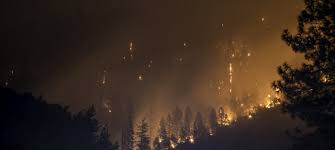The UN Environment
The huge wildfires in Australia, Amazon, California, the Congo basin and Indonesia have drawn the world’s attention to the risks associated with extended periods of unusually hot and dry weather, which is an effect of climate change.
The global average temperature is now 1.1°C higher than at the beginning of last century. Higher temperatures create, in some parts of the world, drier conditions, increasing the likelihood and intensity of wildfires, and mega-fires.
Megafires, typically defined as covering more than 100,000 acres (40,000 hectares or 400 square kilometres), is accelerated by high temperatures and drought. They are extremely challenging to contain, usually only limited by the amount of available burnable vegetation.
By the close of 2019, Brazil, the Democratic Republic of the Congo, the Russian Federation and the United States all experienced megafires on what many have called unprecedented scales.
Global Forest Watch counted over 4.5 million fires worldwide larger than 1 square kilometre in 2019. This is 400,000 more fires than 2018 and two and a half times as many as in 2001. Nearly all – 96 per cent—of the 500 most disastrous megafires of the last decade have occurred during periods of unusually hot and/or dry weather.
Australia faces 10 more weeks until the end of its most concentrated fire season (December to March) and its 2019–2020 bushfire season is already on track to be one of the worst on record. Read more…



